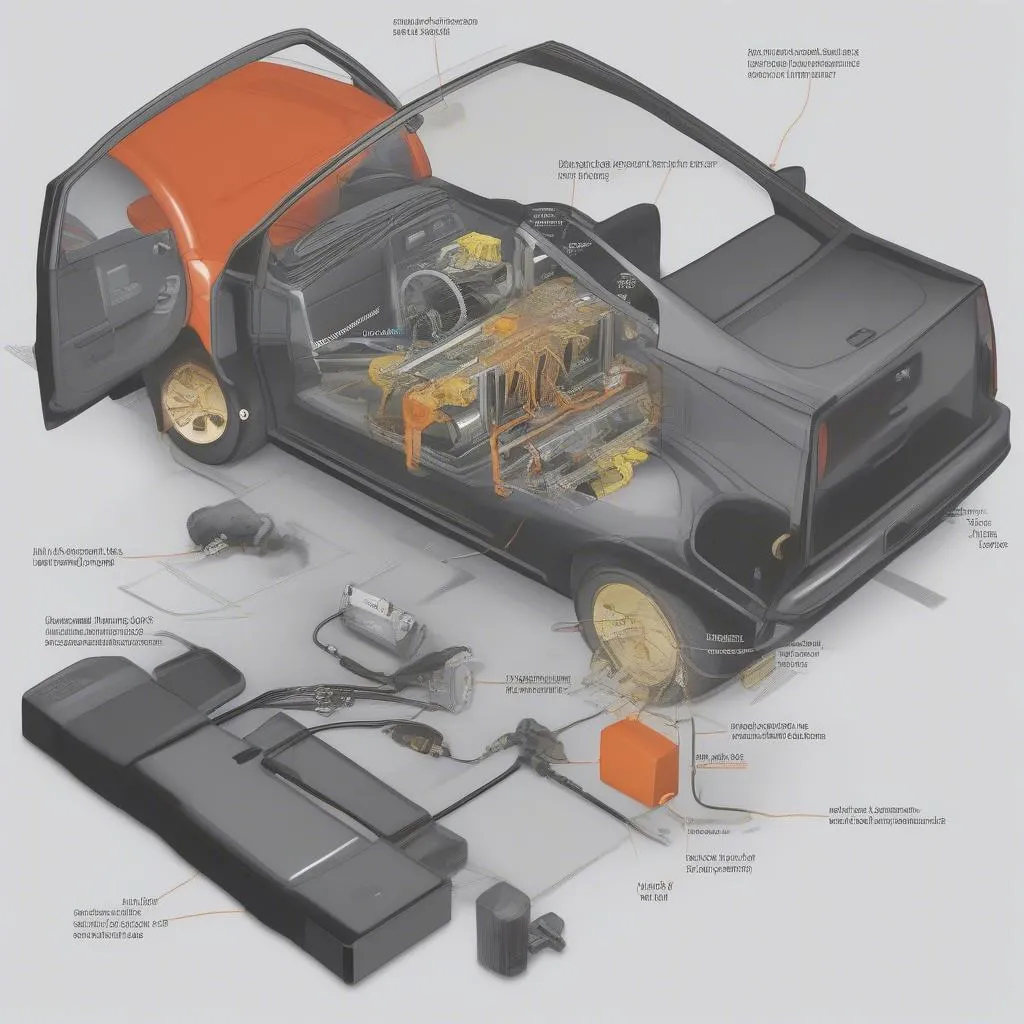You’re in the middle of a project on your classic 1996 Chevy Camaro, and you’re ready to fire it up for the first time after a major engine rebuild. You turn the key, and the engine just cranks but won’t start. You’re thinking, “I followed the instructions perfectly; what could be wrong?” You grab your trusty OBD2 scanner and start checking for codes, but nothing comes up. You’re wondering if the VATS system (Vehicle Anti-theft System) is satisfied. That’s when you ask yourself: “Can A Dtc Scan Tool Tell If Vats Is Satisfied?”
Understanding the Question
This question, “Can a DTC scan tool tell if VATS is satisfied?” goes beyond the surface and touches on several critical areas:
From a mechanic’s perspective: A mechanic needs to understand if a scan tool can help identify issues within the VATS system, leading them to a faster diagnosis and repair.
From an automotive technology standpoint: The question explores the capabilities of diagnostic tools and their limitations in interacting with specific vehicle systems like VATS.
From a financial perspective: Knowing the answer can potentially save time and money by allowing you to troubleshoot the problem efficiently, preventing unnecessary visits to a mechanic or purchasing unnecessary parts.
The Answer and Explanation
The simple answer is no. A standard OBD2 scan tool cannot directly tell if the VATS system is satisfied. The VATS system uses a unique key and ignition cylinder to verify authorization to start the vehicle. This process happens entirely within the ignition system and is not typically communicated to the OBD2 port.
What Happens During a VATS Check?
Here’s how the VATS system works:
- Key Insertion: When you insert the key, the VATS system reads the resistance of the key’s resistor.
- Resistance Check: This resistance value is compared to a stored value within the vehicle’s computer.
- Authorization: If the resistance matches, the computer grants authorization to start the vehicle.
- Engine Start: The engine can then start, and the VATS system disables the ignition and fuel systems if the incorrect key is used.
Troubleshooting VATS Issues
While a standard OBD2 scan tool cannot directly identify a VATS issue, it can still be useful in diagnosing related problems. If you suspect a VATS issue, you can:
- Check for VATS-related codes: Some advanced scan tools may have the capability to read manufacturer-specific codes, which could include VATS-related errors.
- Check for power and ground: Ensure that the VATS system is receiving power and ground signals correctly.
- Inspect the ignition cylinder: Look for any damage or wear to the ignition cylinder, as this can affect the resistance reading.
- Test the VATS resistor: You can use a multimeter to test the resistance of the key’s resistor and compare it to the specifications.
VATS Codes and Diagnostics
If you’re looking for more specific information about VATS codes and diagnostics, you can find resources online, including forums dedicated to specific car models and brands like Chevrolet, Ford, and Toyota. You can also consult a service manual for your specific vehicle.
Other Common Questions
Can a VATS bypass module help with this?
Yes, VATS bypass modules are available, but they are not recommended for regular use. They can bypass the VATS system, allowing the engine to start even if the key is incorrect. However, using a VATS bypass module can disable security features and leave your vehicle more vulnerable to theft.
Why is my VATS system giving me problems?
There could be several reasons why your VATS system is causing problems. Some common issues include:
- Damaged key: A bent or worn key can affect the resistance reading.
- Damaged ignition cylinder: Wear and tear on the ignition cylinder can prevent proper resistance reading.
- Electrical problems: Issues with the wiring or connections within the VATS system can disrupt the process.
How to Get Further Help
If you’re still having trouble diagnosing or fixing your VATS system, consider seeking assistance from a qualified mechanic specializing in automotive electrical systems. They can provide specialized tools and knowledge to help identify and address the issue effectively.
Conclusion
While a standard OBD2 scan tool cannot directly tell you if the VATS system is satisfied, understanding the VATS system and how it works can help you diagnose and troubleshoot potential issues. Don’t hesitate to consult with a professional mechanic if you need further assistance.
 VATS System
VATS System
 OBD2 Scanner
OBD2 Scanner
 Mechanic
Mechanic
Need help with your diagnostics tool setup? Contact us via WhatsApp: +84767531508. Our team of automotive experts is available 24/7 to assist you.


